Never Grill Your Meat or Chicken Like This, USDA Warns
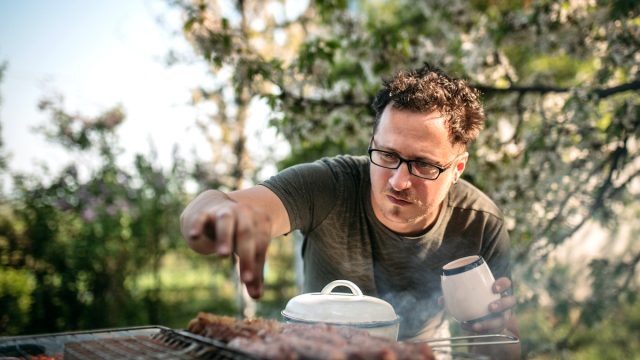
When you’re having a big group over for a barbecue, it can feel overwhelming to get all your burgers, hot dogs, chicken, and other side dishes ready and still be able to enjoy time with your friends and family. But if you were thinking about taking one shortcut in particular to try to get a head start on the barbecuing this weekend, the United States Department of Agriculture (USDA) has a warning for you. Read on to find out what they say you never do next time you’re manning the grill.
RELATED: Never Put Your Grill in This One Place, Experts Warn.
Never partially grill meat or poultry and finish cooking it later, the USDA says.
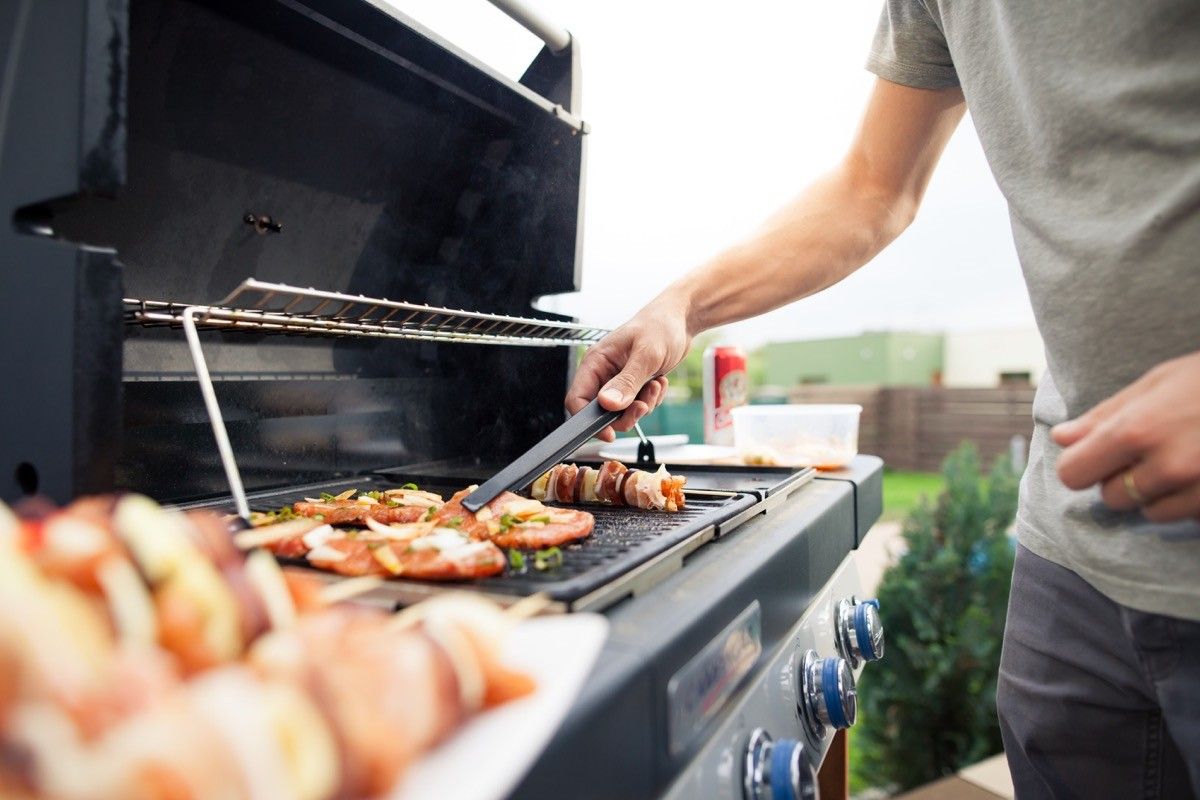
If you thought you could start the grill up early, get some of your burgers and chicken partially cooked, put them in the fridge, and then finish them off later, you’d be mistaken. In its guidance on grilling safety, the USDA says “NEVER partially grill meat or poultry and finish cooking later.”
By only partially cooking your food on the grill, you’re letting harmful bacteria fester, which could cause foodborne illness. “Never brown or partially cook meat or poultry to refrigerate and finish later because any bacteria present would not have been destroyed,” the USDA says in a FAQ.
RELATED: If You See This on Your Grill, Never Use It, Experts Say.
If anything you’re grilling is labeled as “ready to cook,” treat it as if it’s raw.
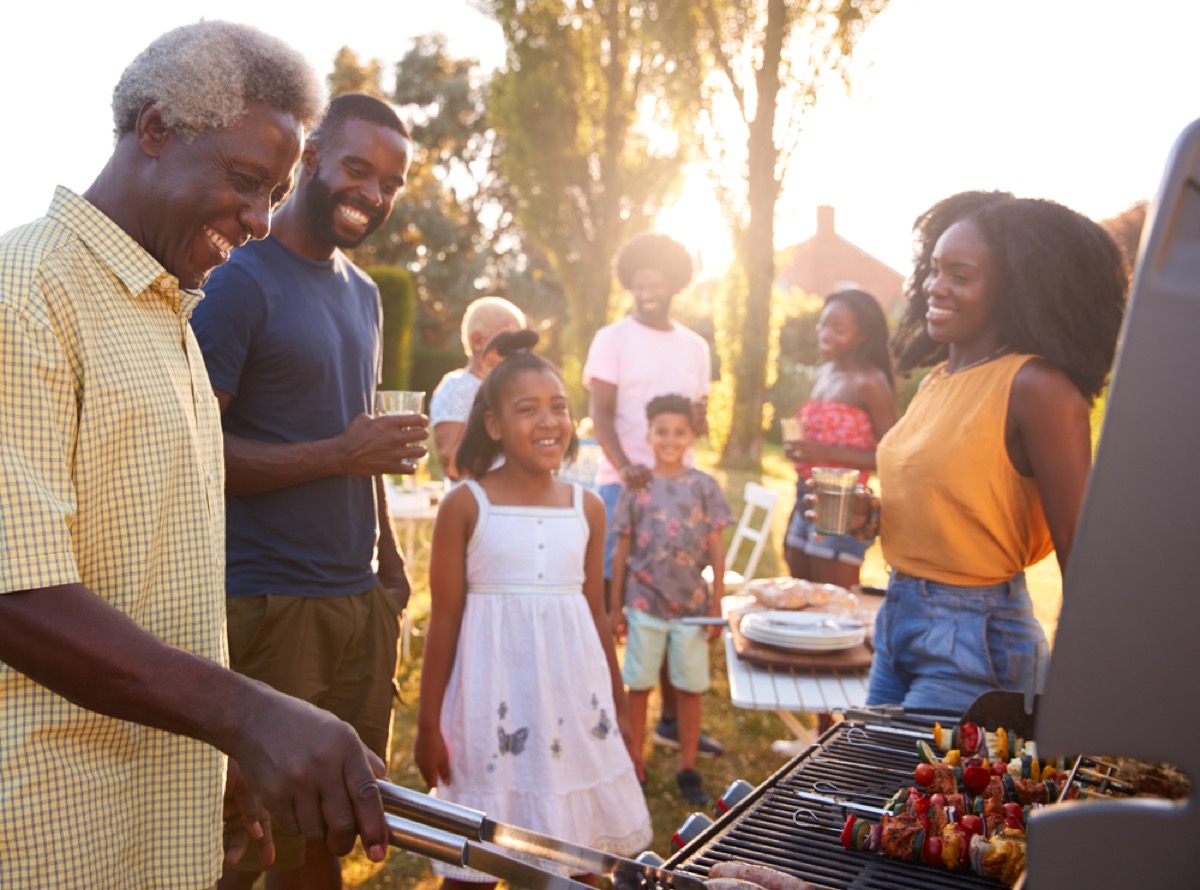
In addition to being wary of partially cooked meat or poultry, beware that frozen products labeled as “cook and serve,” “ready to cook,” or “oven ready” also need to be cooked fully in order to be safe to eat.
“Although frozen products may appear to be pre-cooked or browned, they need to be handled and prepared as raw food and cooked thoroughly,” the USDA says.
Don’t rely on color to tell you if your food is done.
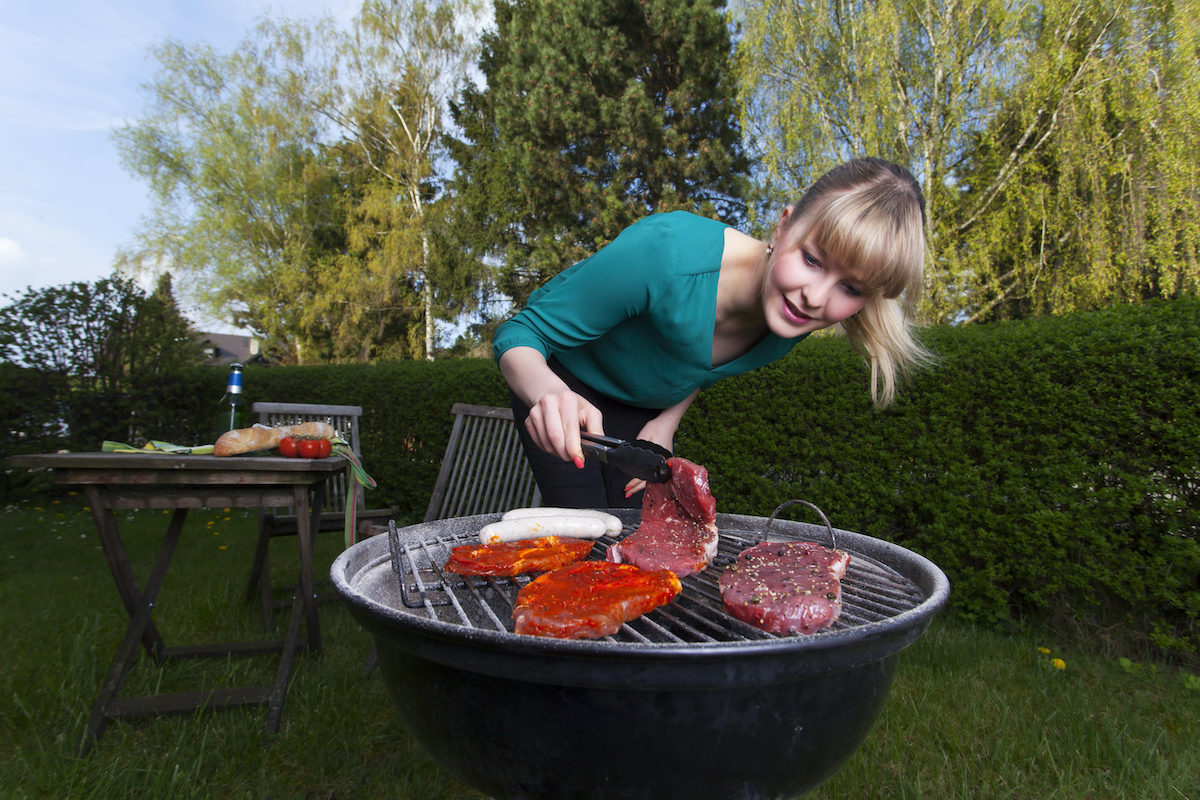
You probably tend to determine if your beef is done based on its color on a scale from red (meaning rare) to brown (meaning well done). But the USDA says grillers must “remember that color is never a reliable indicator of safety and doneness.”
And that applies to both steaks and burgers. “More than 25 percent of burgers can turn brown inside before they are fully cooked,” the USDA’s Food Safety and Inspection Service (FSIS) Administrator Paul Kiecker said in a statement. “Although your grilled foods may look done, foodborne illness causing germs are not killed until the safe internal temperature has been reached.”
RELATED: For more up-to-date information, sign up for our daily newsletter.
Know the temperatures all of your food needs to reach in order to be safe to eat.
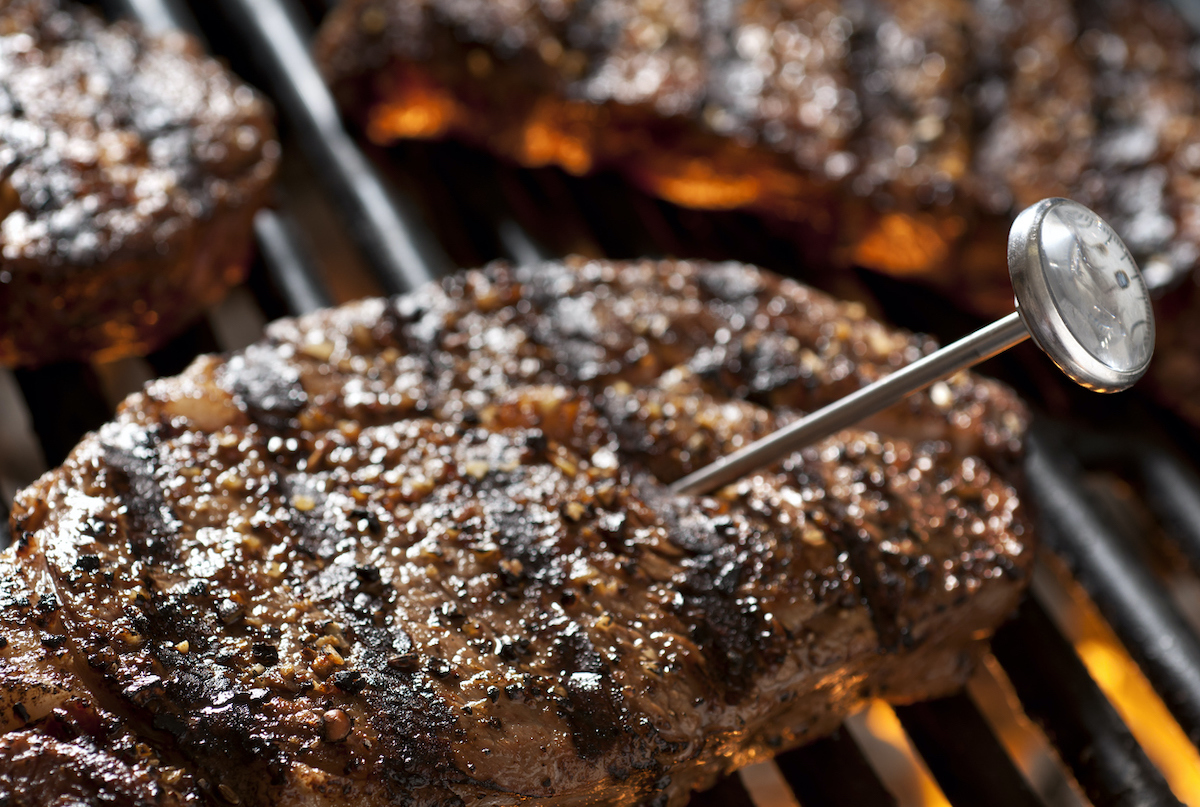
To determine whether or not your food has reached that safe internal temperature, the USDA cautions that any chefs working the grill should always use a thermometer. For beef, pork, lamb, and veal, the minimum safe temperature is 145 degrees Fahrenheit with a three-minute rest time; ground meat—whether beef, pork, lamb, or veal—needs to reach 160 degrees Fahrenheit; and poultry, whole or ground, should be 165 degrees Fahrenheit.
“Don’t let foodborne illness ruin the cookout,” Sandra Eskin, USDA’s Deputy Under Secretary for Food Safety, said in a statement earlier this summer. “Follow food safety guidelines like washing your hands, thoroughly cooking your food, and checking food temperature with a thermometer.”
RELATED: If You See This at a Barbecue, Don’t Eat It, USDA Says in New Warning.